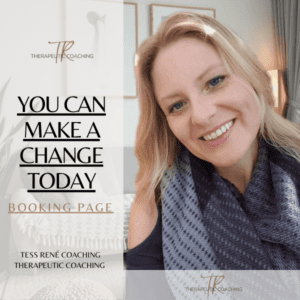Solution-Focused Thinking creates space for progress, clarity, and momentum. It’s a mindset that helps you break out of overthinking and step into action.
Instead of staying stuck in what’s wrong, learning how to focus on solutions can transform how you respond to challenges. Here’s how…
Table of Contents
What Happens When We Shift to Solution-Focused Thinking?

A small shift in focus can open new ways forward.
“Focusing on solutions doesn’t mean ignoring what’s hard, it means pausing to see options.”
When we’re stuck in a loop, spinning on what’s gone wrong, what’s hard, or how unfair something feels, it’s incredibly easy to stay there. Our brains like to fixate on problems because they’re trying to protect us but protection isn’t the same as movement.
Often we need a gentle nudge toward possibility. Start looking toward your strengths, your past successes, your resources and your bigger-picture goals to create momentum.
-
Learning to focus on solutions, not problems, doesn’t mean ignoring what’s hard it means choosing forward movement over rumination.
-
If you’re ready to focus on solutions, not problems, start by asking different questions. “What’s possible here?” opens more doors than “Why did this happen?”
-
Therapists, coaches, and leaders often encourage clients to focus on solutions, not problems, because it builds agency and reduces overwhelm.
Focusing on solutions doesn’t mean ignoring what’s hard. Accepting what’s hard means choosing forward movement over rumination.
It means pausing long enough to ask, “Is there something I can try here?” or “What’s one step forward?” It’s a mindset shift that opens the door to agency, self-trust, and relief.

Try Reframing

Reframing changes what comes into focus.
“One step forward is enough. Progress doesn’t need to be dramatic. It just needs to be real.”
It’s subtle, but powerful. One question keeps you stuck in the loop, the other opens a doorway. Even if you don’t have the answer yet, just asking that question changes the energy.
Instead of asking, “Why is this happening to me?”, try asking, “What can I do with this?”
Same goes for your inner dialogue. When you hear yourself saying, “This is too much”, try shifting to, “This is hard and I can find my way through it.”
Instead of asking, “What is wrong with me?”, ask, “What is in the realm of my control that I can change?”
A small language change opens your system to movement: What’s actually going on here? What’s the core issue? And can it be split into smaller parts?
From there, tiny goals help. Not “fix everything”, but “email one person”, “look into one resource”, or “set a 10-minute timer.”
Try this for solution-focused thinking:
-
Replace “This is too much” with “This is hard—and I can find my way through it.”
-
Replace “Everything is going wrong” with “Something here needs attention.”
This isn’t toxic positivity, but grounded realism with compassion.
Progress doesn’t need to be dramatic. It just needs to be real.
Break It Down So It’s Not So Big

Smaller pieces make big obstacles less overwhelming.
When the problem feels too big to solve, it probably is. Our brains and bodies can only handle so much at one time, that’s why breaking it down matters.
Slice the issue into bite-sized chunks your nervous system can actually digest. You don’t eat an elephant in one bite (and honestly, who’s ordering elephant anyway?).
Tiny steps are kinder, more sustainable, and far more likely to get you moving again.
First take a slow breath in and out. Feel your feet on the ground. Slowing down and grounding makes more creative ideas come on board in the mind.
A few ways to shift the view to solution-focused thinking:
-
Which part is mine to act on today?
-
What could I try in the next 10 minutes?
Tiny progress is still progress and momentum begins in micro-moments of courage, not massive leaps.
→ Free Resource ←
🧠Feeling stuck in overthinking mode?
Download “Unravel Your Exhausted Mind” — a free guide to calm mental loops and shift into focused, solution-based thinking.
Turn Problems into Portals

Sometimes the problem is how you see the obstacle.
“When we change our relationship with the obstacles, the obstacles change.”
Challenges are where we grow. They call up parts of us we didn’t know we had. When you shift from “why me?” to “what now?”, something changes inside you.
Our Self-worth grows when we shift how we see the obstacles life presents us. Our confidence increases when we look at problems as challenges to solve that happen to everyone.
We can think that the world is against us, or “These things only happen to me.“
Instead of getting rid of problems, when we change our relationship with them, the problems change from being personal into something life presents to everyone.
Quick mindset pivots into solution-focused thinking:
- What might I learn from this?
- How have I handled things like this before?
Your nervous system learns safety through experience, and recalling past resilience rewires trust in yourself. Use it. Let it remind you that you’ve already walked through tough things and found your footing before.
Keep Your Mind Open (Especially When It Wants to Close)

When you widen your frame, possibilities appear.
When we’re overwhelmed or hurt, we tend to narrow our view. We cling to the familiar or try to control the outcome. But often, what helps is staying open.
“Creativity flows when we look beyond narrow thinking…”
When we widen again, by asking for input or reminding yourself you have options, you let creativity flow and see solutions that were invisible a moment before.
Try this for solution-focused thinking:
-
Phone a friend or mentor.
-
Brainstorm ten silly ideas (sometimes one is gold).
-
Move your body. Fresh oxygen shifts thinking.
Let creative, even weird ideas float through. And if you’re not sure what to do, ask someone. A fresh perspective can open doors you didn’t know were there.
Take Imperfect Action

Small steps make big challenges feel lighter.
We want to make the “right” choice don’t we? Sometimes, we get paralyzed trying to find it and decision paralysis comes from fear of getting it wrong.
The desire to be right not only keeps us stuck it often leads us to giving up on our goals entirely.
Here’s a truth: clarity usually comes after action, not before.
Try something small and doable it doesn’t have to be perfect to matter.
If it doesn’t work, that’s not failure it’s feedback.
Each step gives you data and resilience.
That’s how confidence grows: through gentle experimentation.
It doesn’t have to be the “right” thing just something that nudges the wheel forward.
When it doesn’t go to plan, adjust and keep going.
Stay Anchored to the Bigger Picture

Stay anchored to what matters most.
“Overthinking only feels productive, in reality, it has the opposite effect.”
When things get messy or complicated, it’s easy to lose sight of where you’re going. Negative feelings become louder and cloud our perception of reality.
Keep your bigger goal in view. Remind yourself: Why does this matter to me?
Let that guide your decisions, your energy, your time.
Momentum comes where meaning and action meet.
Don’t Let the Problem Take All Your Energy
Overthinking feels productive, but it’s often the opposite. If you find yourself going in mental circles, or swallowed by big emotions, pause.
You’ve thought about it enough. Now it’s time to move.
Set a time limit. Give yourself 20 minutes to journal or brainstorm, and then shift. Focus on what you can do. Focus on what’s next.
Check in with yourself, what’s actually moving forward? A little reflection goes a long way in keeping you on track.
Frequently Asked Questions
Q1. What does it mean to have a solution-focused mindset?
It means directing your attention toward what can be changed, rather than replaying what went wrong. It’s a mindset of possibility and practical action.
Q2. How can I stop overthinking and start acting?
Start with one small, specific action. Clarity follows motion. Even five minutes of focused doing can shift your mood and perspective.
Q3. What if I can’t find a solution right away?
That’s normal. Step away, ground your body, or ask for another perspective. Solutions often appear when the mind softens its grip.
Whenever You’re Ready for Support
If you’ve been stuck replaying the same mental loop, it’s not that you lack motivation. Your nervous system needs safety before it can move forward. Finding your momentum gets easier with guidance.
When you’re ready to shift from analysis to action, we’ll help you rebuild trust in your own direction…
Tired of Going It Alone? I’m here..
Change gets easier with the right support.
“Tess helped me calm my nervous system and find lasting change.” — Claire S.
Shifting from problem to solution isn’t about ignoring the hard stuff. It’s about reminding yourself you have options. That you can try. That you’re allowed to take the next small step even without certainty.
Start there. That’s where momentum lives.


